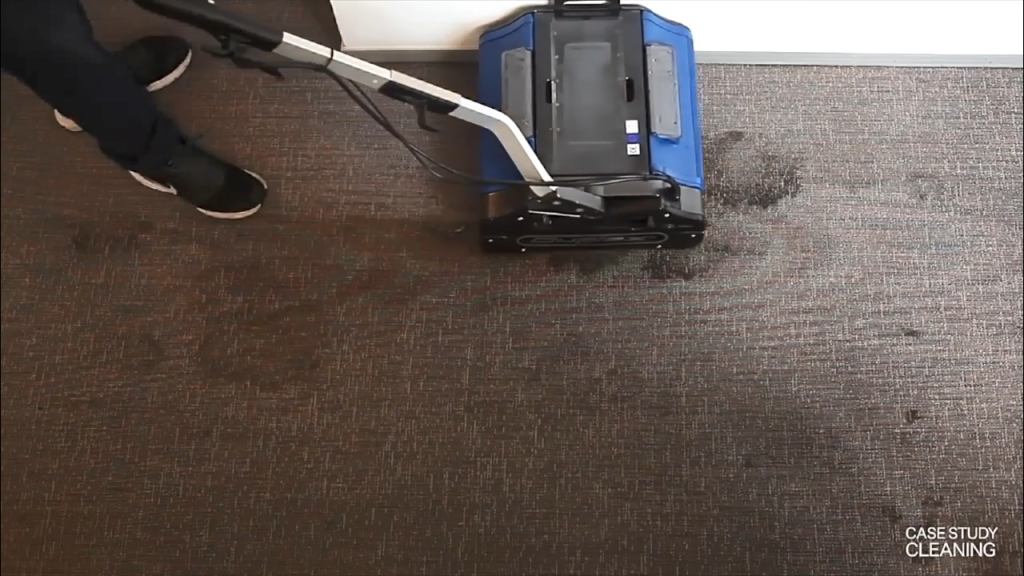At first glance, a slightly stained carpet or a bit of discolouration in the hallway may not seem like a big deal. But for many businesses, what lurks beneath those fibres can quietly erode reputation, increase expenses and even pose safety risks.
Dirty carpets don’t just look bad — they cost you more than you think.
Lost First Impressions = Lost Revenue
In a hotel lobby, office reception or aged care common area, people notice flooring — whether they realise it or not.
A carpet that looks tired, smells stale or feels damp underfoot instantly sends a message: this place isn’t looked after.
For businesses where client trust and comfort matter — like healthcare, hospitality or education — that first impression can directly impact bookings, reviews and client retention.
Maintenance Costs Add Up

Without regular deep cleaning, carpets degrade faster.
The dirt trapped in fibres acts like sandpaper, wearing down the material every time someone walks over it.
This means more frequent replacements, which come with:
- Disruption to operations
- Labour costs
- Waste and disposal fees
- And of course, the cost of new carpet itself
It’s far more cost-effective to maintain carpets properly than to replace them prematurely.
Health Risks = Legal Risks

Carpets in commercial settings are magnets for dust mites, bacteria, allergens and mould spores — especially in humid environments.
Neglecting them doesn’t just affect cleanliness; it can affect health.
Poor air quality, allergy flare-ups, and increased respiratory issues among staff or visitors are more common than many realise.
In aged care, child care or healthcare facilities, this isn’t just a concern — it could be a compliance failure waiting to happen.
Slip Hazards and Liability
Soiled carpets tend to retain moisture longer.
Combine that with frayed edges or uneven surfaces from wear, and you’ve got a trip hazard that could turn into a legal claim.
Clean, well-maintained carpets dry faster, stay even, and reduce risk — simple as that.
The Cost of Cleaning Too Late
By the time stains are visible or odours become noticeable, the damage is usually deeper than it looks.
Surface-level cleaning won’t cut it.
That’s why many businesses are shifting to routine cleaning with machines that not only clean but dry quickly, allowing for frequent maintenance without disrupting operations.
Some even choose machines that combine mechanical counter rotating brushing with steam — a practical option for schools, offices and hotels alike.
Real-World Impact: What Businesses Are Saying

Facilities teams report fewer complaints from staff and guests when carpets are kept fresh.
Contract cleaners say they work more efficiently — and land more repeat jobs — when equipped with the right commercial cleaning machines.
Managers say it’s easier to meet audit requirements and pass inspections when deep cleaning is done consistently.
It’s a ripple effect. Clean carpets aren’t just nice to have — they change how a space feels, how it’s judged and how long it lasts.
Q&A: Clean Carpets, Clean Business
Q: Can we just spot-clean carpets when needed?
A: Spot cleaning is useful, but it’s not a substitute for routine deep cleaning. Dirt and bacteria build up below the surface and continue causing damage if left untreated.
Q: Is outsourcing carpet care enough?
A: Outsourcing works well for periodic deep cleans, but many facilities are also adding their own equipment to manage spills and high-use areas more frequently.
Q: How often should carpets in busy spaces be cleaned?
A: High-traffic areas typically benefit from weekly or bi-weekly cleaning, with more frequent spot treatment. The exact schedule depends on your industry and space usage.

